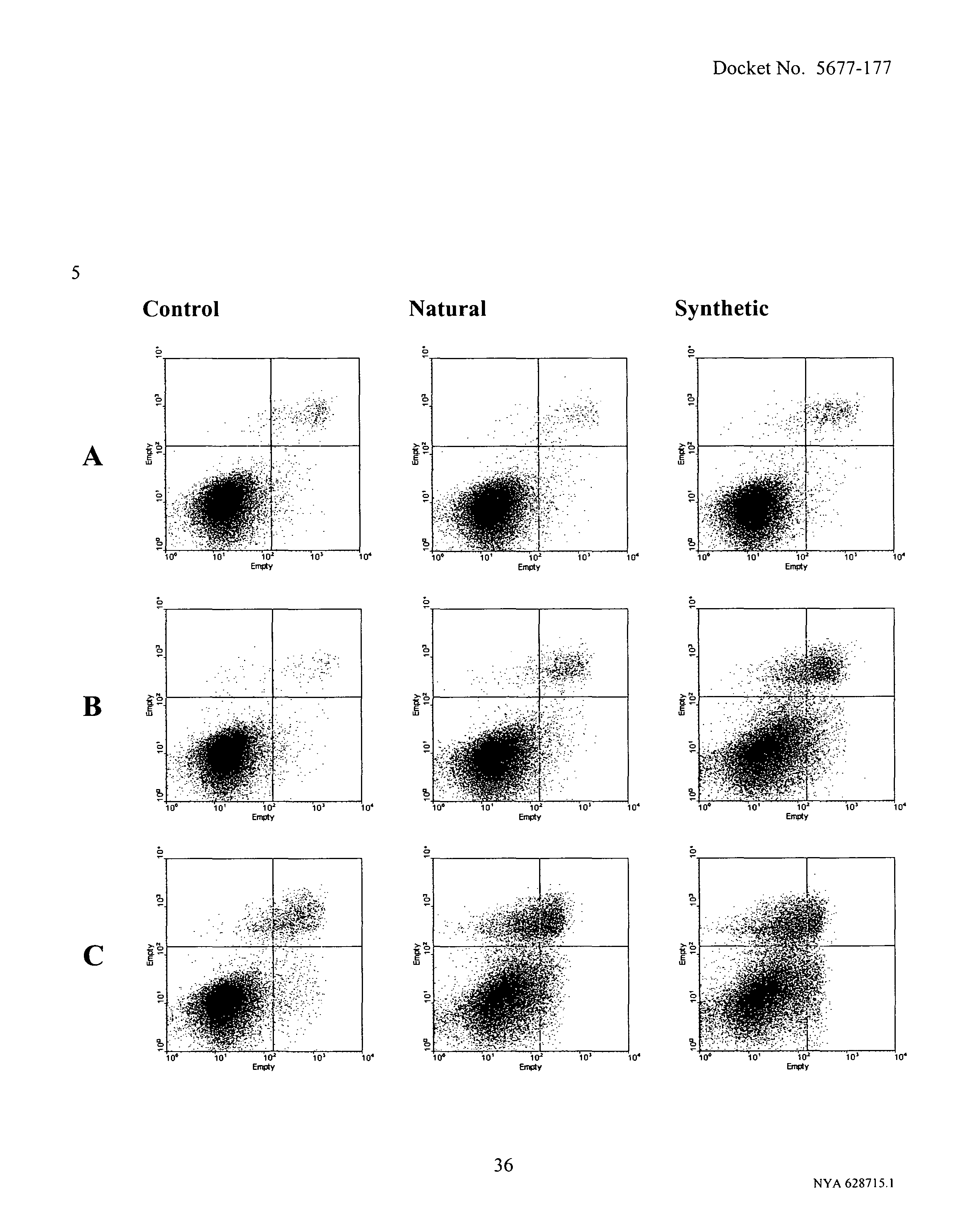Synthesis of dimeric, trimeric, tetrameric pentameric, and higher oligomeric epicatechin-derived procyanidins having 4,8-interflavan linkages and their use to inhibit cancer cell growth through cell cycle arrest
a technology of epicatechin and procyanidin, which is applied in the direction of organic chemistry, organic active ingredients, drug compositions, etc., can solve the problems of affecting the pathophysiology, affecting the growth affecting the survival rate of cancer cells, etc., to achieve the effect of inhibiting cell growth
- Summary
- Abstract
- Description
- Claims
- Application Information
AI Technical Summary
Benefits of technology
Problems solved by technology
Method used
Image
Examples
example 1
Preparation of 5,7,3′,4′-Tetra-O-benzyl-4-(2-hydroxyethoxy)epicatechin
[0048]To a solution of 21.5 g (33.0 mmol) of 5,7,3′,4′-tetra-O-benzylepicatechin in 220 mL of anhydrous methylene chloride (CH2Cl2) was added at room temperature 11.0 mL (198 mmol) of ethylene glycol and then all at once with good stirring 15.0 g (66 mmol) of 2,3-dichloro-5,6-dicycano-1,4-benzoquinone (DDQ) was added. After 110 minutes of vigorous stirring at room temperature under a calcium chloride (CaCl2) tube, a solution of 8.5 g (69.5 mmol) of 4-(dimethylamino)pyridine (DMAP) in 50 mL of anhydrous methylene chloride was added whereupon a copious dark precipitate appeared. After another 10 minutes of stirring at room temperature, the mixture was filtered over a coarse glass frit, the precipitate was washed with 50 mL of methylene chloride, and the solution was evaporated to near dryness. The residue was filtered over silica gel (17×9 cm) with ethyl acetate / hexane 1:1, and all product-containing fractions were ...
example 2
Condensation of 5,7,3′,4′-Tetra-O-benzylepicatechin with 5,7,3′,4′-Tetra-O-benzyl-4-(2-hydroxyethoxy)epicatechin Catalyzed by Acidic Clay
[0049]To a solution / suspension of 9.26 g (14.2 mmol, 4 equiv.) of 5,7,3′,4′-tetra-O-benzyl-epicatechin and 5.0 g of Bentonite K-10 clay in 115 mL of anhydrous methylene chloride (CH2Cl2) was added, with ice cooling, stirring and exclusion of moisture, within 2.5 hours 2.53 g (3.56 mmol) of 5,7,3′,4′-tetra-O-benzyl-4-(2-hydroxyethoxy)epicatechin in 35 mL of anhydrous methylene chloride. The bath temperature rose to +6° C. at the end of the addition. Stirring in the bath was continued for 1 hour, during which time the temperature rose to +12° C. The clay was filtered off with suction over celite, and the solids were washed two times with 50 mL of methylene chloride. Twenty mL of toluene was added, and the solution was evaporated to a small volume. The residue was chromatographed on silica gel (60×5 cm) with ethyl acetate / chloroform / hexane (1:14:14). ...
example 3
Condensation of Bis(5,7,3′,4′-tetra-O-benzyl)epicatechin (4β,8)-Dimer with 5,7,3′,4′-Tetra-O-benzyl-4-(2-hydroxyethoxy)epicatechin Catalyzed by Acidic Clay
[0053]To a solution / suspension of 5.60 g (4.31 mmol, 3 equiv.) of bis(5,7,3′,4′-tetra-O-benzyl)epicatechin (4β,8)-dimer and 2.04 g of Bentonite K-10 clay in 45 mL of anhydrous methylene chloride (CH2Cl2) was added, with ice cooling, stirring and exclusion of moisture, within 110 minutes 1.02 g (1.44 mmol) of 5,7,3′,4′-tetra-O-benzyl-4-(2-hydroxyethoxy)-epicatechin in 15 mL of anhydrous methylene chloride (CH2Cl2). The bath temperature rose to +6° C. at the end of the addition. Stirring in the bath was continued for 1 hour, during which time the temperature rose to +12° C. The clay was filtered off with suction over celite, and the solids were washed four times with 25 mL of ethyl acetate. The combined solutions were evaporated. Attempted separation by column chromatography on silica gel (56×5 cm) with ethyl acetate / hexane / chlorofo...
PUM
| Property | Measurement | Unit |
|---|---|---|
| temperature | aaaaa | aaaaa |
| frequencies | aaaaa | aaaaa |
| frequencies | aaaaa | aaaaa |
Abstract
Description
Claims
Application Information
 Login to View More
Login to View More - R&D
- Intellectual Property
- Life Sciences
- Materials
- Tech Scout
- Unparalleled Data Quality
- Higher Quality Content
- 60% Fewer Hallucinations
Browse by: Latest US Patents, China's latest patents, Technical Efficacy Thesaurus, Application Domain, Technology Topic, Popular Technical Reports.
© 2025 PatSnap. All rights reserved.Legal|Privacy policy|Modern Slavery Act Transparency Statement|Sitemap|About US| Contact US: help@patsnap.com

